Click on images to enlarge
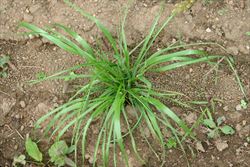
habit prior to flowering (Photo: Trevor James)
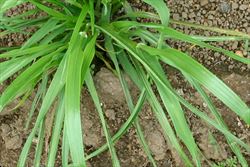
leaves (Photo: Trevor James)
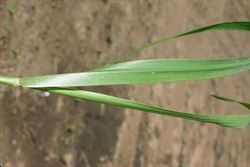
leaf underside (Photo: Trevor James)
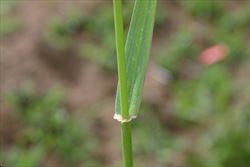
close-up of stem and base of leaf blade (Photo: Trevor James)
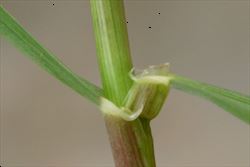
close-up of membranous ligule (Photo: Trevor James)
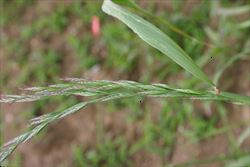
young seed-heads (Photo: Trevor James)
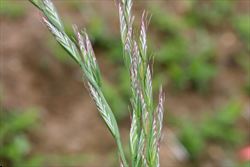
close-up of flower spikelets, with relatively short glumes and numerous awn-tipped florets (Photo: Trevor James)
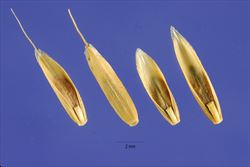
close-up of seeds (Photo: Steve Hurst at USDA PLANTS Database)
Scientific Name
Lolium multiflorum Lam.
Synonyms
Lolium italicum A. BraunLolium perenne L. var. italicum (A. Braun) RodwayLolium perenne L. var. multiflorum (Lam.) Parn.Lolium perenne L. subsp. multiflorum (Lam.) Husn.
Family
Gramineae (South Australia)Poaceae (Queensland, New South Wales, the ACT, Victoria, Tasmania, Western Australia and the Northern Territory)
Common Names
annual Italian ryegrass, annual ryegrass, Italian rye grass, Italian rye-grass, Italian ryegrass, rye grass, ryegrass, Westerwold ryegrass
Origin
The exact native range of this species is obscure. However, it is thought to be native to northern Africa (i.e. Algeria, Egypt, Libya, Morocco and Tunisia), the Azores, the Madeira Islands, the Canary Islands, southern Europe (i.e. Albania, Bulgaria, Greece, Italy, Romania, Yugoslavia, France, Portugal and Spain), western Asia (i.e. Afghanistan, Iran, Iraq and Turkey) and Pakistan.
Naturalised Distribution
Widely naturalised southern and eastern Australia. It is mainly found in south-eastern Queensland, eastern New South Wales, the ACT, Victoria, Tasmania, south-eastern South Australia and south-western Western Australia. Also recorded from inland New South Wales and other parts of South Australia (e.g. on the Eyre Peninsula).
Notes
Italian ryegrass (Lolium multiflorum) has been widely cultivated as a pasture grass in the temperate regions of Australia. It has become a widespread weed of crops and roadsides in southern and eastern Australia and also readily hybridises with other ryegrasses (Lolium spp.). The most common of these is hybrid ryegrass (i.e. Lolium x hybridum or Lolium multiflorum x Lolium perenne), which is actually more common than Italian ryegrass (Lolium multiflorum) in naturalised ryegrass populations in some states.
Though this species is largely seen as a weed of crops and disturbed sites, it is also regarded as an environmental weed in some situations. Italian ryegrass (Lolium multiflorum) is regarded as a potential threat to one of more vegetation communities in Victoria, where it is a common weed of plains riparian shrubby woodlands in the Wimmera bioregion and floodplain riparian woodlands in the Northern Inland Slopes bioregion in this state. It has also been recorded in conservations areas in the inland regions of south-eastern Australia (e.g. Rutherglen Nature Conservation Reserve in north-western Victoria and Warra National Park in inland northern New South Wales).
However, in Western Australia and South Australia, Italian ryegrass (Lolium multiflorum) is mainly a problem in higher rainfall areas and saline habitats nearer the coast. It has been recorded from Scott Creek Conservation Park near Adelaide and grows on winter-wet flats and along waterways between Perth and Albany in south-western Western Australia. Italian ryegrass (Lolium multiflorum) is also one of several weed species that are replacing native samphire and rush communities in areas flushed by stormwater along the Swan/Canning and Leschenault estuaries in south-western Western Australia.

